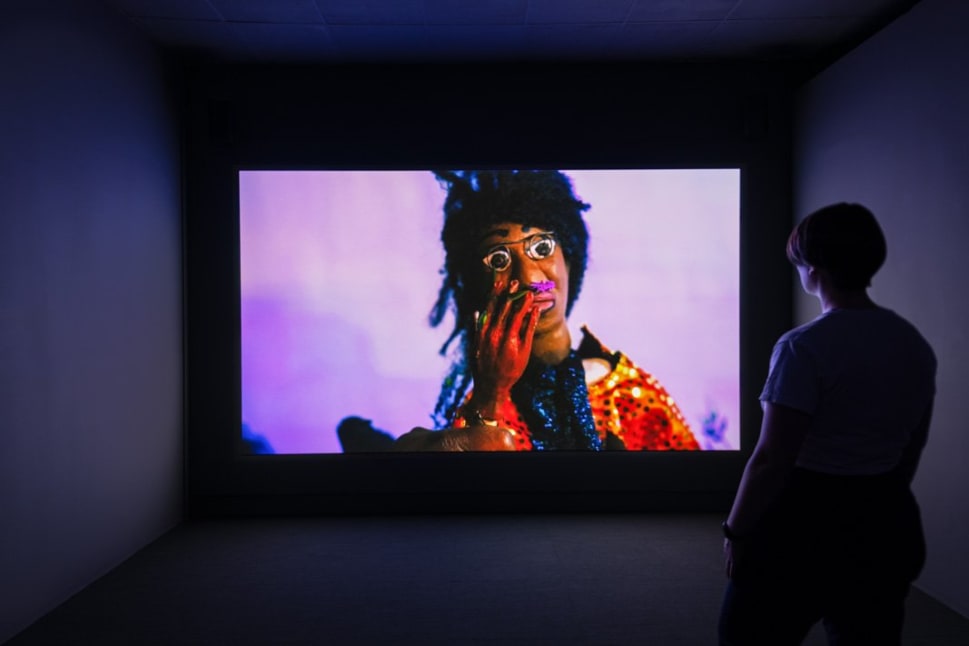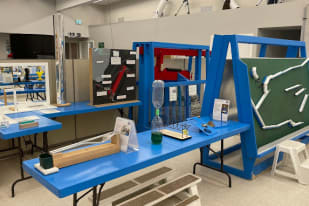The Kamloops Art Gallery (KAG) has been a consistent presence in Kamloops, providing a platform for diverse art forms and fostering community engagement. This detailed examination of the gallery will explore its history, exhibitions, programming, and overall impact on the Canadian art scene.

A Brief History of Kamloops Art Gallery
Founded in 1978, the Kamloops Art Gallery has grown from modest beginnings into the largest public gallery in the Interior of British Columbia. In 1998, the gallery moved into a purpose-built facility, designed by architects Peter Cardew and Nigel Baldwin. The building integrates modern functionality with a focus on creating spaces that serve both artistic and community needs.
The gallery’s mission emphasizes connecting art, artists, and audiences. This focus on fostering understanding and appreciation of art has been a constant since its establishment, shaping the direction of its programming and outreach efforts.
Location and Accessibility
The gallery is situated in downtown Kamloops, within the traditional territory of the Secwépemc people. This location positions the gallery as a cultural hub, easily accessible to both residents and visitors.
Efforts to ensure accessibility are evident in the gallery’s infrastructure and programming. The building is wheelchair-accessible, and the gallery provides gender-inclusive washrooms. Free admission is offered every Thursday, supported by sponsorship, allowing broader access to its exhibitions and programs.
The Permanent Collection
The Kamloops Art Gallery’s permanent collection consists of more than 3,100 works, representing a mix of regional, national, and international artists. The collection reflects the gallery’s history and commitment to showcasing diverse artistic perspectives.
One notable aspect of the collection is its connection to significant Canadian art events. In 2005, the gallery co-commissioned Canada’s participation in the Venice Biennale, featuring work by Rebecca Belmore. This contribution highlighted the gallery’s role in engaging with contemporary art on an international scale.
Exhibitions
The Kamloops Art Gallery hosts over 12 exhibitions annually, featuring a range of artistic media and perspectives. These exhibitions include contributions from local, national, and international artists, ensuring a variety of viewpoints and themes are represented.
Recent exhibitions have included "Ancestral Dreams & Other Premonitions" by Cindy Mochizuki, exploring themes of memory and history, and "Pieces" by Victoria Kjargaard, addressing the legacy of residential schools. The gallery’s exhibition programming is designed to provoke thought and dialogue, aligning with its mission to engage audiences.

Educational and Public Programs
The Kamloops Art Gallery’s programming extends beyond exhibitions, offering educational and public initiatives for various age groups. Studio programs provide hands-on opportunities for children, teens, and adults to engage in artistic creation.
Talks and tours are another key component, with regular events featuring artists, curators, and guest speakers. These programs offer insights into contemporary art practices and help bridge the gap between artists and the public. Community-focused initiatives, such as Family Art Saturday, further support the gallery’s goal of fostering engagement and learning.
Community Impact
The Kamloops Art Gallery plays a significant role in the cultural life of Kamloops and the broader region. It serves as a gathering place for art-related activities, hosting events and collaborating with local organizations to support the community.
The gallery’s contributions also extend to the local economy. By attracting visitors and supporting artists, it helps drive economic activity in Kamloops. Partnerships with educational institutions and participation in cultural festivals further amplify its impact.
Visiting the Kamloops Art Gallery
The gallery is open Tuesday to Saturday, with extended hours on Thursdays. Admission fees are modest, and free entry is available for members, students, and children. The gift shop on-site offers art-related merchandise and publications, providing additional value to visitors.
Practical amenities ensure a comfortable experience. The gallery’s location in downtown Kamloops makes it easily accessible by public transportation or car, with parking options nearby. Visitors can enjoy the exhibitions and participate in programs without logistical challenges.
Conclusion
The Kamloops Art Gallery offers much more than art on display. It is a dynamic institution that connects communities with the transformative potential of artistic expression. Its commitment to accessibility, education, and collaboration underscores its importance in the Canadian art landscape. Those in Kamloops or visiting the area will find it a place worth exploring.





